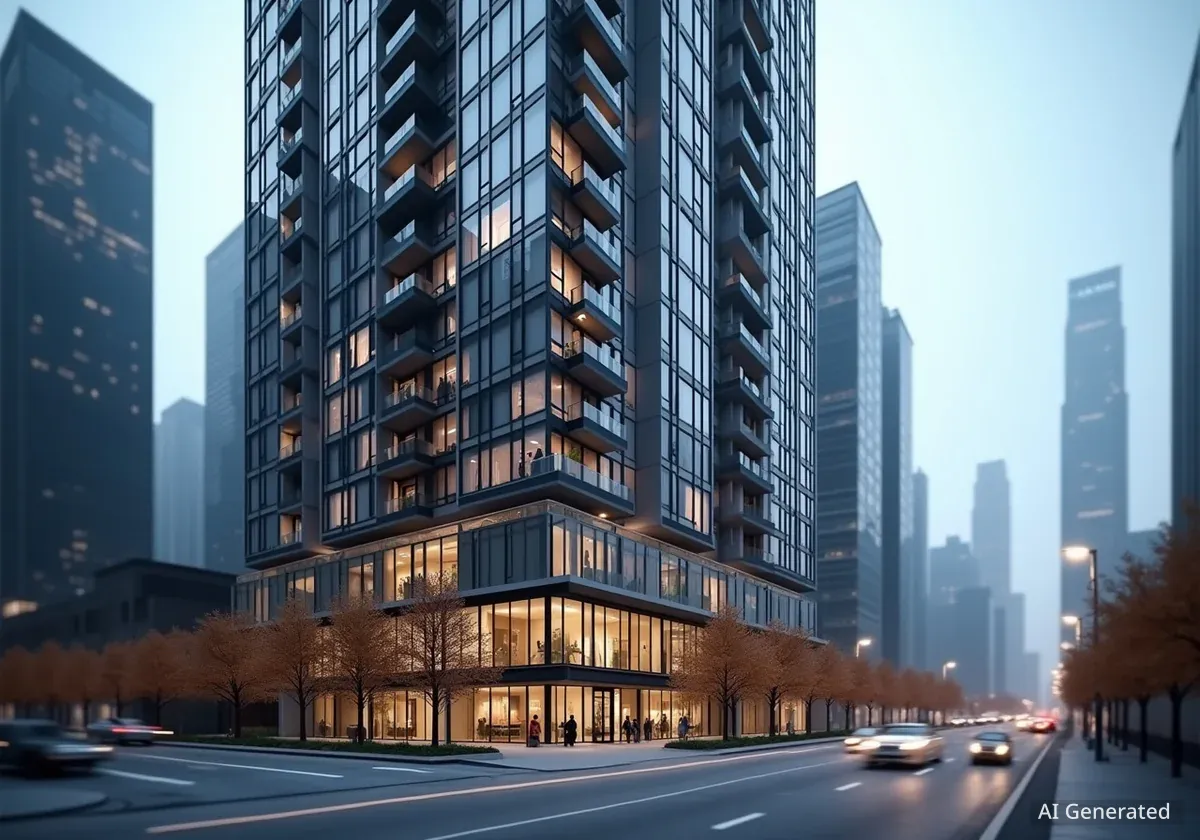A condominium in Chicago's historic Palmolive building recently sold for less than half of its 2007 purchase price, marking another significant loss in a tower once considered a pinnacle of luxury on North Michigan Avenue. The sale highlights a developing trend of steep discounts within the iconic building, raising questions about the high-end downtown real estate market.
The transaction is the latest in a series of sales where owners have absorbed substantial financial losses, a stark contrast to the building's celebrated status during the pre-recession real estate boom. This pattern suggests a recalibration of value for even the most prestigious addresses in the city.
Key Takeaways
- A condo in the Palmolive building sold for a loss exceeding 50% compared to its 2007 price.
- This is part of a recurring pattern of discounted sales within the building over the past several years.
- The trend reflects broader shifts in Chicago's luxury condo market, including changing buyer preferences and increased competition.
- The Palmolive building, an Art Deco landmark, was converted into exclusive residences in the mid-2000s.
A Closer Look at the Sale
The recent sale underscores a challenging reality for some early investors in the Palmolive's residential conversion. While specific unit details remain private, public records confirm the property changed hands for a price that represents a dramatic depreciation from its peak valuation nearly two decades ago.
This sale is not an isolated incident. Real estate analysts have noted several other units in the Palmolive trading at prices well below their initial purchase points. For a building that once commanded top-dollar premiums, these sales indicate a significant market correction affecting even legacy properties.
Historical Context: The Palmolive Building
Originally completed in 1929 as the headquarters for the Colgate-Palmolive-Peet Company, the Palmolive Building is a quintessential Art Deco skyscraper. Its tiered design and prominent location made it an instant Chicago landmark. In the early 2000s, it underwent a high-profile conversion from office space to 100 exclusive luxury condominiums, attracting wealthy buyers during a flourishing real estate market.
Broader Implications for Chicago's Luxury Market
The trend observed at the Palmolive may be indicative of wider shifts in Chicago's high-end condominium market. Several factors could be contributing to this pressure on resale values, particularly for older conversions.
Increased Competition from New Developments
Since the Palmolive's conversion, Chicago has seen a wave of new ultra-luxury residential towers. Buildings like the St. Regis Chicago and One Bennett Park offer brand-new construction with state-of-the-art amenities that cater to the latest demands of affluent buyers.
These newer properties often feature expansive glass walls, contemporary open-concept floor plans, and extensive wellness facilities that weren't standard in conversions from the early 2000s. This fresh inventory creates stiff competition for sellers in established buildings.
Over 50% Loss: The recent transaction saw the property's value decrease by more than half since its 2007 peak, a significant figure in any real estate market, let alone a prime luxury segment.
Changing Buyer Preferences
Today's luxury buyers often prioritize different features than those of 15 years ago. There is a greater emphasis on integrated technology, dedicated home office spaces, and private outdoor areas like balconies or terraces—features that may be less common in historic conversions.
"What a buyer wanted in 2007 is not necessarily what they are looking for today. The market has evolved, and new construction has set a different standard for what 'luxury' means in downtown Chicago."
While the classic elegance of the Palmolive remains a draw for some, a growing segment of the market appears to favor the modern conveniences and design aesthetics of newly built competitors.
The Enduring Appeal vs. Market Realities
Despite the recent trend of discounted sales, the Palmolive building retains its status as a premier Chicago address. Its location on the Magnificent Mile, architectural significance, and reputation for white-glove service continue to attract a discerning clientele.
However, the financial outcomes of recent sales serve as a sober reminder that even iconic properties are not immune to market forces. The high carrying costs associated with such properties, including substantial property taxes and monthly assessments, can pressure owners to sell, even at a loss.
- Location: Prime setting on North Michigan Avenue.
- Architecture: Historic Art Deco design.
- Competition: Pressure from new, amenity-rich towers.
- Market Shift: Evolving buyer tastes and post-pandemic lifestyle changes.
For prospective buyers, the current market may present an opportunity to acquire a residence in a landmark building at a price point that was unimaginable a decade ago. For current owners, it signals a period of adjustment where pricing expectations must align with the new competitive landscape of downtown Chicago's luxury real estate sector.





